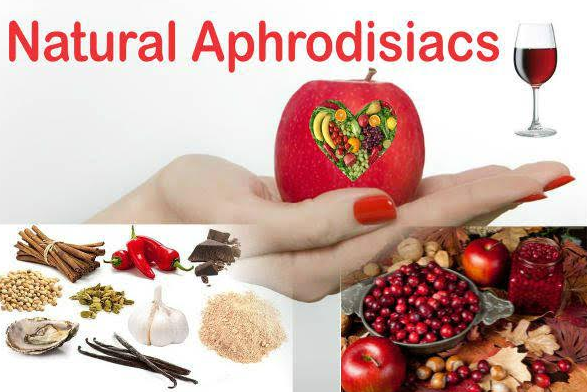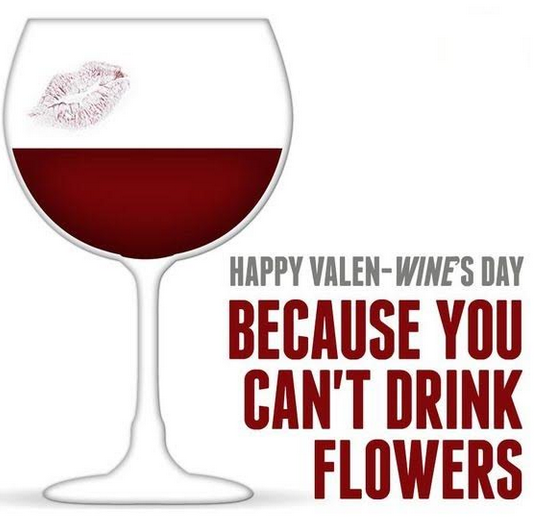Valentine’s Day: Can some foods really make you sexier?
St. Valentine’s Day is a global celebration. In the U.S. it’s chocolate and flowers; in the Philippines, it’s become a tradition for thousands of couples to wed in massive public ceremonies. Here in Cuenca, restaurants are promoting their special dinners for lovers, and all the party clothes stores on my block display red-dress-clad mannequins clad in fancy, glittery accessories and dangerously high-heeled shoes.
the party clothes stores on my block display red-dress-clad mannequins clad in fancy, glittery accessories and dangerously high-heeled shoes.
Valentine’s Day is attributed to an early Christian martyr named Valentine, who, after Emperor Claudius II had banned marriages, was executed for performing the ceremonies in secret.
Each year we celebrate this day by doing something special for our partners and loved ones, and many traditions begin with food.
GourmetSleuth.com reports ,… in ancient times a distinction was made between a substance that increased fertility versus one that simply increased sex drive. One of the key issues in early times was nutrition. Food was not so readily available as it is today. Undernourishment creates a loss of libido as well as reduces fertility rates. Substances that “by nature” represent “seed or semen” such as bulbs, eggs, snails were considered inherently to have sexual powers. Other types of foods were considered stimulating by their physical resemblance to genitalia.

In the spirit of Valentine’s Day, this column will showcase foods that may enhance your libido.
[Disclaimer: the sources cited are not solely scientific, and some provide general information and entertainment.)
Love Foods
Consuming “love” foods regularly won’t necessarily turn you into a Casanova or Mata Hari, but as usual, behind every myth is a modicum of good science. By eating well you’re more likely to feel great, and feeling great can lead to spectacular things in the bedroom!
Tomatoes
The French call tomatoes pommes d’amour, apples of love. Italians call them pomi d’oro, or golden apples. Tomatoes are rich in antioxidant vitamins A and C, and are the most concentrated food source of lycopene, a bright red carotene and carotenoid pigment and phytochemical. Lycopene is especially important in male prostate health and by cooking tomatoes, especially in olive oil and garlic, the nutritional potency of lycopene is significantly enhanced — and so is the taste! The Mediterranean people really know how to live… and love.
Garlic
The ancient Greeks, Romans, Chinese and just about every culture include garlic an indispensable part of their cuisines. The active ingredient, allicin, is a powerful antioxidant traditionally used for protection against bacterial and viral infections. Garlic increases blood flow, in all the right areas. The Greeks and Egyptians considered garlic an aphrodisiac, and in case you discount this, Tibetan monks were prohibited from entering monasteries after consuming it, because of garlic’s reputation for ‘inflaming the passions!’ But enjoy it cooked: eating raw garlic can produce the opposite effect — it’s an anaphrodisiac!
 Chili Peppers
Chili Peppers
Legend is that spicy foods bring heat to the bedroom. Chilies are considered performance enhancing because they increase body heat and heart rate. For a healthy heart (and better endurance ) chilies are rich in capsaicin, a compound that binds to receptors on nerve fibers that transmit pain and possibly heat, explaining its effect on the lining tissues of your mouth. Certain pepper plants (Capsicum frutescens) are rich in capsaicin, including cayenne, green or red chili, spur or tabasco peppers. Also associated with lowering high blood pressure, chilies are potent sources of vitamins A and C, and bioflavonoids, important nutrients for healthy cell growth and to help lower inflammation. Keep it spicy — chilies help protect your heart.
Basil
The Romans used basil, a fragrant member of the mint family, to symbolize love. The Greeks used it to ease nervous tension and cure headaches (important before making love?). Even today, Italians consider basil a token of love. Pesto is a sexy food — combine basil leaves, pine nuts, (see below) and olive oil, and you have lovely sauce, delicious on pasta, pizza or drizzled on heart-healthy fish.
Pine Nuts
Also known as piñon nuts or pignoli, they’re the edible seeds of the cones of different varieties of pine trees, popular ingredients in cuisines of many cultures, notably Mediterranean and Asian. Pine nuts are rich in protein and are linked to satiety. In ancient times pine nuts were prescribed to increase male fertility. While there is no scientific evidence that pine nuts increase libido for men and women, they are a good source of zinc, and, like oysters, are thought to support male sexual potency. But, what’s good for him is great for her.
 Oysters
Oysters
Ancient Romans and Greeks prized oysters as an aphrodisiac, possibly because of their high zinc content, related to the production of testosterone for men. Oysters are a good source of protein and are very low in fat and offer significant amounts of calcium, vitamin B12, iron, and copper. Read more about the interesting research on oysters here.
Maca
Nicknamed ‘Peruvian Viagra’, maca is a sweet root vegetable (from the radish family) that grows high in the Andes. Long thought to have aphrodisiac qualities, including enhanced stamina and heightened desire, these effects are not yet scientifically proven, but maca’s nutrition is the real deal. Rich in B-vitamins, vitamins C and E, calcium, zinc, iron, magnesium, phosphorous and a variety of amino acids. Like all supplements, don’t overdo on maca. More is not necessarily better.
Chocolate
What says ‘Valentine’s Day’ better than rich, dark chocolate? The New York Times reports, … the Aztecs may have been the first on record to draw a link between the cocoa bean and sexual desire: the emperor Montezuma was said to consume the bean in copious amounts to fuel his romantic trysts. Chocolate (especially dark chocolate) contains flavonoids and other chemicals that help keep the heart healthy, and a healthy heart means long-lasting love. Chocolate contains tryptophan, a brain chemical involved in sexual arousal, and phenylethylamine, a stimulant related to amphetamine — a ‘love chemical’ that’s released when people fall in love. It also contains theobromine, a vasodilator (similar to caffeine.) You could say that there is a correlation between satisfying sex and enjoyment of chocolate.
 Wine
Wine
Wine is enjoyed as a customary accompaniment to a romantic dinner, but be mindful that more is not better. For many, a glass of wine enhances the experience, but too much has the opposite effect. Wine aids digestion, can stimulate the appetite, and contains antioxidants like resveratrol (found in grape skins) and proanthocyanidins. However, you’d have to drink several bottles daily to consume enough of these micronutrients to call wine “heart-healthy.” Populations who drink moderately, with friends, and with meals (1 5-oz glass for women, 1-2 glasses for men, with 1-2 days alcohol-free each week) are shown to have a lower risk for death from heart disease compared to non-drinkers or beer and spirit drinkers. A little dark chocolate and red wine for dessert…now, there’s a natural affinity.
If It Looks Sexy …
Some foods traditionally linked to fertility and potency really do resemble sex organs, including figs, asparagus, eggplant, almonds, avocado, and pomegranate. What do they all have in common? They are natural, unadulterated, and heart-healthy plant foods! LOVE fresh foods, and they’ll love you back.
Finally, for both men and women, the number one cause of sexual dysfunction is diabetes. This disease of insulin absence (type 1) or insulin deficiency/resistance (type 2) impacts many different organs, but especially small vessels and nerves. Without vessel and nerve function, touch and response to touch are greatly decreased. Read my previous column about avoiding impotency here.
Stay healthy and vital while indulging in wholesome foods and set the scene for sexual enjoyment with your favorite partner.
¡Feliz Día de San Valentin! Happy Valentine’s Day! Feel free to share your favorite celebratory foods, memories, Cuenca restaurant and event recommendations, and recipes in the comments section below.
Sources:
Authority Nutrition. Red Wine: Good or Bad?https://authoritynutrition.com/red-wine-good-or-bad/
CuencaHighLife.com. The Elephant in the Room – Impotence.https://www.cuencahighlife.com/elephant-bedroom-impotence/
Garlic Central. Garlic as an aphrodisiac.http://www.garlic-central.com/aphrodisiac.html
Gourmet Sleuth. Aphrodisiac Foods & Recipes.http://www.gourmetsleuth.com/articles/detail/aphrodisiac-foods
Harvard Health. Lycopene-rich tomatoes linked to lower stroke risk. https://www.health.harvard.edu/blog/lycopene-rich-tomatoes-linked-to-lower-stroke-risk-201210105400
National Public Radio.Weekend Edition Sunday.You Say Tomato, I Say ‘Love Apple’. http://www.npr.org/templates/story/story.php?storyId=106932330
Psychology Today. Is Maca an Aphrodisiac? https://www.psychologytoday.com/blog/all-about-sex/201104/is-maca-aphrodisiac
The Independent. Aphrodisiacs: 10 best foods to get you in the mood.http://www.independent.co.uk/life-style/food-and-drink/features/aphrodisiacs-10-best-foods-to-get-you-in-the-mood-10043642.html
The Telegraph.Raw oysters really are aphrodisiacs say scientists (and now is the time to eat them).http://www.telegraph.co.uk/news/uknews/1486054/Raw-oysters-really-are-aphrodisiacs-say-scientists-and-now-is-the-time-to-eat-them.html




















